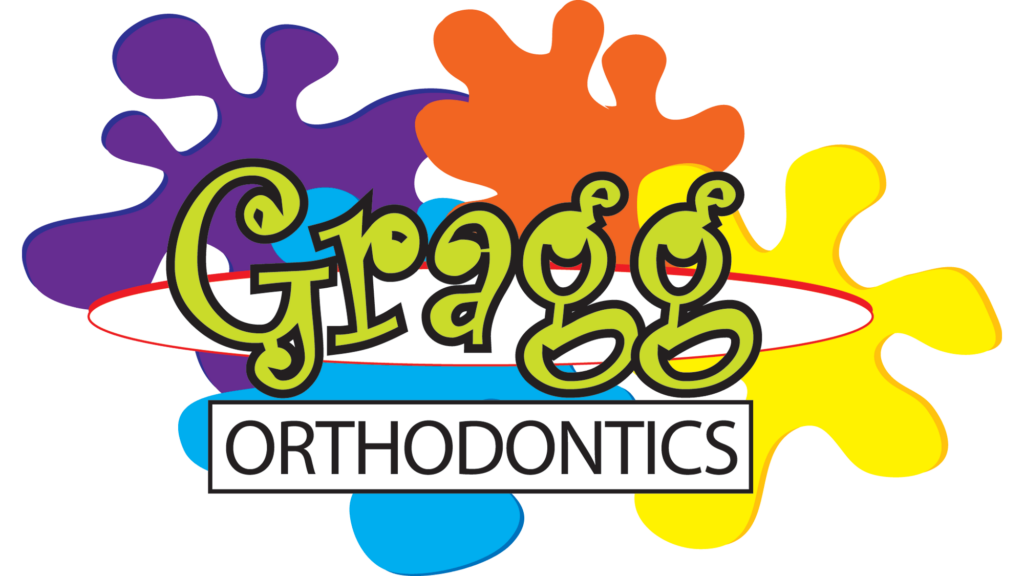After months—or even years—of wearing braces, there’s no better feeling than seeing your beautiful, straight smile for the first time. But for many orthodontic patients, the concern of teeth shifting after braces can be real and frustrating. You may wonder why teeth may shift back after braces or how to maintain that perfect smile.
At Gragg Orthodontics, we’ve seen it all and are here to answer your questions while providing you with actionable tips to keep your teeth in place after treatment.
Let’s take a look.
Key Takeaways
- Teeth can shift after braces: This is a natural occurrence that can happen due to factors like aging, dental habits, or lack of retainer use.
- Retainers are essential: Wearing your retainer as instructed by your orthodontist is crucial to maintaining your beautiful post-braces smile.
- Monitoring your alignment is important: If you notice changes in your teeth, it’s important to address them early to prevent further shifting.
- Gragg Orthodontics is here to help: Our expert team can provide guidance and solutions to keep your Gragg Smile looking perfect.
Why Do Teeth Move After Braces?
Teeth shifting after braces can occur for several reasons. Understanding why it happens is the first step in preventing unwanted movement. Let’s look at the top 5 reasons why teeth may shift back after braces.
1. Natural Aging Process
Your teeth are in constant motion, even after orthodontic treatment. Over time, the natural aging process can cause your teeth to shift forward and inward, particularly in the lower jaw.
This phenomenon, called mesial drift, is a normal part of aging but can impact your straightened smile if left unchecked.
2. Lack of Retainer Use
Retainers are crucial for maintaining your post-braces smile. Neglecting to wear them consistently is one of the most common reasons why teeth shift back after braces.
Your retainer works to hold your teeth in their corrected positions while your jawbone and surrounding structures stabilize.
3. Tooth Grinding (Bruxism)
If you grind or clench your teeth while sleeping or during the day, it can cause gradual movement over time.
The repetitive pressure from grinding puts stress on your teeth and can lead to noticeable changes.
4. Gum Recession or Bone Loss
Issues related to gum health, like gum recession or bone loss, can weaken the foundation of your teeth, making it easier for them to shift.
This is often seen in patients with untreated periodontal disease.
5. Missing Teeth or Dental Gaps
If there are gaps in your smile caused by missing teeth, adjacent teeth can start to drift into those spaces.
This not only leads to alignment issues but can also impact your ability to chew properly.
What Can You Do If Your Teeth Are Moving After Braces?
If your teeth are shifting after braces, don’t worry! There are steps you can take to prevent further movement and maintain your beautiful, straight smile.
1. Wear Your Retainer Regularly
The best way to keep your teeth in their new positions is by wearing your retainer as instructed by your orthodontist. At Gragg Orthodontics, we provide customized retainers to fit comfortably and protect your smile. Whether you need a fixed or removable retainer, we’ve got you covered.
Pro Tip: Over time, retainers can wear down or lose their fit. Be sure to schedule regular check-ups to keep them in good shape!
2. Address Teeth Grinding
If you suspect you grind your teeth, speak with your orthodontist. They may recommend wearing a nightguard to protect your teeth. Nightguards are designed to absorb the pressure of grinding and reduce the risk of shifting.
This is a common issue for many people, especially during sleep. Stress and anxiety can contribute to teeth grinding, so it’s important to manage them effectively.
3. Maintain Good Oral Hygiene
Healthy gums are vital for a stable smile. Brush and floss daily, and don’t skip your regular dental check-ups. Treating issues like gum disease early can prevent further complications.
Maintain a balanced and nutritious diet to keep your teeth and gums strong. Limiting sugary and acidic foods can also help prevent tooth decay and erosion.
4. Consider Orthodontic Retreatment
If your teeth have shifted significantly, you may need a minor orthodontic adjustment. At Gragg Orthodontics, we can help you explore options like Invisalign® or Damon Braces to realign your teeth quickly and comfortably.
These orthodontic treatments can help correct minor misalignments and improve the overall appearance of your smile. In addition, straighter teeth are easier to clean and maintain, reducing the risk of tooth decay and gum disease.
5. Replace Missing Teeth
If gaps are causing your teeth to shift, talk to your dentist about replacing missing teeth with implants, bridges, or partial dentures.
Filling these spaces will help keep your teeth in their proper positions.
How Gragg Orthodontics Can Help Your Smile Stay Stunning
At Gragg Orthodontics, we understand how important it is to protect your smile after treatment. That’s why our approach goes beyond straightening teeth—we focus on creating a smile that lasts a lifetime. We help ensure your teeth remain in their ideal positions long after your braces come off.
If your teeth are starting to shift, we offer solutions that range from retainers to advanced treatment options like Invisalign and Damon Braces. And with our state-of-the-art technology and personalized care plans, you’ll always feel supported on your smile journey.
FAQ
Q: Why do teeth shift back after braces?
A: Teeth may shift back after braces due to a few reasons, such as not wearing retainer as advised by the orthodontist, natural changes in facial structure, or not following proper oral hygiene practices.
Q: How long do I need to wear a retainer?
A: The length of time for wearing a retainer varies for each individual and can range from a few months to several years. It ultimately depends on your teeth’s stability and your orthodontist’s recommendation.
Q: Are there different types of retainers?
A: Yes, there are different types of retainers available, such as traditional wire retainers, clear plastic retainers, and bonded retainers that are attached to the back of your teeth. Your orthodontist will determine the best type for you based on your individual needs and preferences.
Q: My teeth are moving after braces. What should I do?
A: If you notice your teeth shifting or moving after braces, it is important to contact your orthodontist immediately. They may recommend wearing a retainer more frequently or for longer periods of time.
Your Smile Is Worth Protecting
Nobody wants to see their hard-earned straight smile disappear. By understanding why teeth move after braces and taking proactive steps to maintain your alignment, you can ensure that your results last for years to come.
If you’re noticing changes in your smile or need guidance on retainers, Gragg Orthodontics is here to help. Schedule a consultation today and take the first step toward maintaining your gorgeous Gragg Smile.
Contact us now to learn more or book your appointment!

